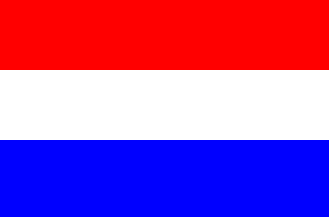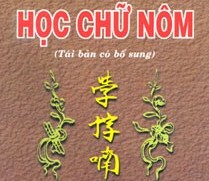- Productie: S2B discover!
- More about Vietnam
- Redactie: Roby Bellemans
A bit about Việt Nam
Understanding Vietnamese language
I favor abstract art because one searches for the essence during the process of abstraction.
I tried to learn Vietnamese since a while and it seemed not easy. At first because the not too
costly study books are of mediocre to useless value. I might write on this subject once but it
was my reason tot think about why it is so difficult to learn Vietnamese and make this abstract
in able to turn to the essence. I mostly hear it is a matter of bluntly learning by heart combined
with many excercises etc.
Educational psychologist Van Parren proved this to be the least efficient method of learning.
Young children will be able to handle this way. They still have quite an empty hard disc inside
their brain pan. To the contrary, elder humans have stored already a lot of knowledge which
often works quite confounding. As an example I speak a bit of French language and in this
language "toi" means you but in Vietnamese "toi"means "me". This knowledge activates my
fantasy. I subsequently see a big, threatening French men with a big finger pointing to a much
smaller Vietnamese person while he shouts "Toi!!!!"Travaillez!!! (work). Then the scared
Vietnamese person points to himself and says "toi travaillez " Because it started raining
heavily, a Vietnamese hat came on and it became tôi
Our language skill separates us from other animals. We have access to immense language
possibilities due to having a language. Animals can communicate through language too. They
might even equal us in some ways but they can not communicate with the far away past. This
is something we can do, though only in one direction. We can read the thoughts our ancestors
more or less shared and chose to write down. No other animal is able to do this.
Communicating through time barriers is only possible by using writing. The way it is written
will define our thinking.
The brilliant philologist and philosopher Nietschze once wrote about the absorption of
Prussian language by the German people. He claimed those who are speaking as such will also
start to think as such. He predicted this would possibly lead to a big catastrophe.
The way language in written form has been presented to us for centuries has a direct
connection how we nowadays formulate our thoughts with the help of language. Often the
influence of the form of language is underestimated. The lettertype in itsself for instance can
have a profound influence to our ability to understand read language. Contemporary letter
types are amazingly refined. Recently a letter type has been developed by
which dialecticians can read much better.
The simplest example in this is the difference between a serifless and a serif letter.
This I
is serifless and this
I has serifs.
 In many serifless lettertypes the letters will dance separately
from eachother. While serif letters will appear interconnected thanks to the serif line.
In particular in long tekst parts serifless letters will be exhausting to read and therefor the
content they represent will be more difficult to grasp. The mixing of different lettertypes also
frequently causes learning problems. Such as in this book:
In many serifless lettertypes the letters will dance separately
from eachother. While serif letters will appear interconnected thanks to the serif line.
In particular in long tekst parts serifless letters will be exhausting to read and therefor the
content they represent will be more difficult to grasp. The mixing of different lettertypes also
frequently causes learning problems. Such as in this book:
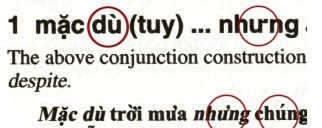
We are discussing only a minor detail here. The difference in use of loose letters such as in
Latin scripture and characters like in Chinese scripture is more immense. Usually little
attention is paid to this.
In one of the intensively used study books, "An Introduction to Language"
(Fromkin & Rodman, Harcourt Brace College Publishers 9780030753794) we read:
"Human memory is short-lived, and the brain's storage capacity is limited. Writing overcame
such problems and allowed communication across the miles and through the centuries.
Writing permits a society to permanently record its literature, its history and science, and its
technology. The creation and development of writing systems is therefore one of the greatest
of human achievements".
This book focuses on the diversity of scriptures but neglects the consequences caused by the
use of a particular system. I think that is a pity because how we fix information in writing has
a huge relevance.
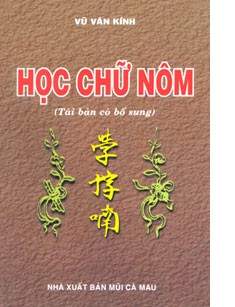 Remarkable about Vietnamese language is that the present
scripture was used long after its founding development form. From the contemporary scripture
we can not deduct how the language was constructed essentially. In able to understand this we
have to go back in time hundreds of years when we discover the Chinese scripture to be its
original form. The Vietnamese version is called
"chữ nôm"
Remarkable about Vietnamese language is that the present
scripture was used long after its founding development form. From the contemporary scripture
we can not deduct how the language was constructed essentially. In able to understand this we
have to go back in time hundreds of years when we discover the Chinese scripture to be its
original form. The Vietnamese version is called
"chữ nôm"
About the influence of the Chinese writing system
Vietnam is a tall shaped, relatively small country with the Mekong river in the South and the
Red river in the North. Around both rivers rich civilizations evolved. The North was home to
the Dong Song civilization which extended into Myanmar (Burma) till around 200 BC.
Then the Chinese invasion radically ended this situation from which moment we speak about
the people (Viet) living South (Nam) of China. They were since raised in a Chinese fashion.
Same education, management and philosophy. Before Le Roi put an end to the Chinese
occupation in the 15th century there were several uprisings. Accordingly each village has a
Le Roi street which often houses a Ho Chi Minh museum as Vietnamese highly value
their heros. Long after the Chinese invaders were driven out the Chinese language remained in
use and left a profound imprint on the Vietnamese language. The Chinese scripture consists of
characters. A language using characters is a totally different language to one using
letters.
Understanding Vietnamese will be faster and more fun when essential differences in writing
between both systems will be studied because several language twists originate from the way
of writing. I will present an example. The Vietnamese verb for going
đ,
has only one character. There are no characters for all verb forms, the character is never
adapted to the verb. A grammar particle is put in front in able to express past and future.
Sẽ for future and đã for past. Đang
can be possibly used for when we are on the going. Because of the use of Chinese scripture
Vietnamese doesn't recognize any conjugations. There is more though. Within Latin scripture
all words are build from a limited amount of letters. A plural form is easily constructed. In this
line we should create constantly new characters.
This is impossible to do so one also uses a particle in front of the letter. Plural forms are still
unknown even though Vietnam uses the Latin alphabet. Many diversions are used, based from
the use of characters in Vietnamese which are unusual to us. In the character language each
word has its own character which results in ten thousands of characters, even without all verbs
and plural forms. Because there was such a large quantity of characters it seemed useful to
classify these. Each class received its own depicting character. This aspect returns in all
diverse languages influenced by Chinese such as Japanese and Thai. In ancient times the Thai
lived in the North of Vietnam from where they moved down to present day Thailand. We can
still find a substantial ethnic Thai population living in Northern Vietnam today.
Thai language also consists of classifiers as in Vietnamees. Some of these classifiers one can
learn easily. Xe for instance is the classifier for transportation vehicles.
. Xe đạp
is a bicycle.
. Xe máy a motor sycle, xe buýt a bus etc.
Con is used for animals. So when one reads something in the menu with "con" in front it will
definitely not be vegetarian. For meat lovers: con gà is chicken, con bò is
beef, con heo.is pig and con chó is dog.
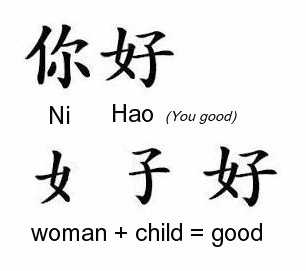 Another effect of the Chinese scripture origin is the absence of long words in Vietnamese.
Words were also constructed out of different characters. A good example is the very well
know Chinese greeting 'Ni Hao', The character for 'feeling good' is a combination of the
character representing woman and the character representing child.
Another effect of the Chinese scripture origin is the absence of long words in Vietnamese.
Words were also constructed out of different characters. A good example is the very well
know Chinese greeting 'Ni Hao', The character for 'feeling good' is a combination of the
character representing woman and the character representing child.
In Vietnamese this works out exactly the same: they remain two different characters but in
Latin scripture they became two separate words. Example wise: there is a character for flying
which is in Vietnamese "bay" and a character for machine which is in Vietnamese
'máy'. An airplane becomes 'máy
bay'.
In ancient China flying machines were unknown but one tied an inmate on a kite which was
flown. The inmate had to report what he saw up there after he managed to survive and land.
Many weird grammar twists are more understandable and easier to learn once you kno wit
originated from Chinese scripture. One has to think a bit in characters. We will focus on the
usefulness of present day Vietnamese scripture in a next episode. Useful to know is that 50%
of
the Vietnamese vocabulary originates from Chinese but for these same words original
Vietnamese words are used which makes the language very rich but also often confusing.

